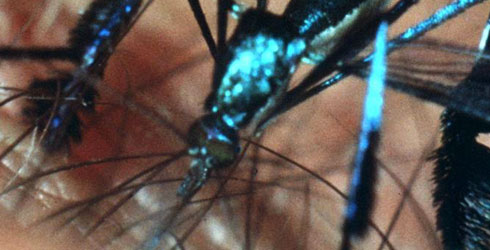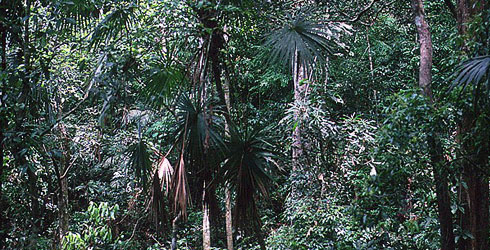Sabethes gymnothorax
This species was first described by Ralph E Harbach and John L Petersen in 1992. Until then, Sabethes gymnothorax was confused with Sabethes tarsopus.
These 2 species were encountered repeatedly during long-term studies of ecological changes associated with the construction of the Bayano hydroelectric project in eastern Panama.
The species name is derived from the masculine Greek words gymnos (bare, naked) and thorax (breastplate, chest) in reference to the character of the proepisterna, which readily distinguishes the species from Sabethes tarsopus.
The specific habitat of the immature stages is unknown, but like all sabethine mosquitoes they occupy small collections of water in plant parts.
Consequently, the species is endangered by habitat loss that occurs with the destruction of forests.
Species detail
The species occurs in tropical forest throughout Central America and probably extends into northwestern areas of South America.
-

Biology
Little is known about this species, but females prefer to take a blood meal from the face or head. Find out what we know from laboratory studies.
Images

Sabethes gymnothorax.
© Professor Woody Foster
A Sabethes mosquito alighting on the nose of a young girl to take a blood meal.
© Dr Anthony Guimarães.
Sabethes gymnothorax habitat.
About the author

Dr Ralph Harbach
Merit Researcher and world authority on the taxonomy and systematics of mosquitoes. Focusing on the integrated systematics of insect disease vectors, especially Culicidae.
A word from the author
"This brilliant metallic-coloured mosquito exhibits an interesting ability to hover before alighting on the nose to take a blood meal."
Toolbox
Harbach, R E and Petersen, J L (1992). Two species previously confused under the concept of Sabethes tarsopus in Central America (Diptera: Culicidae). Mosquito Systematics 24: 102–123.
